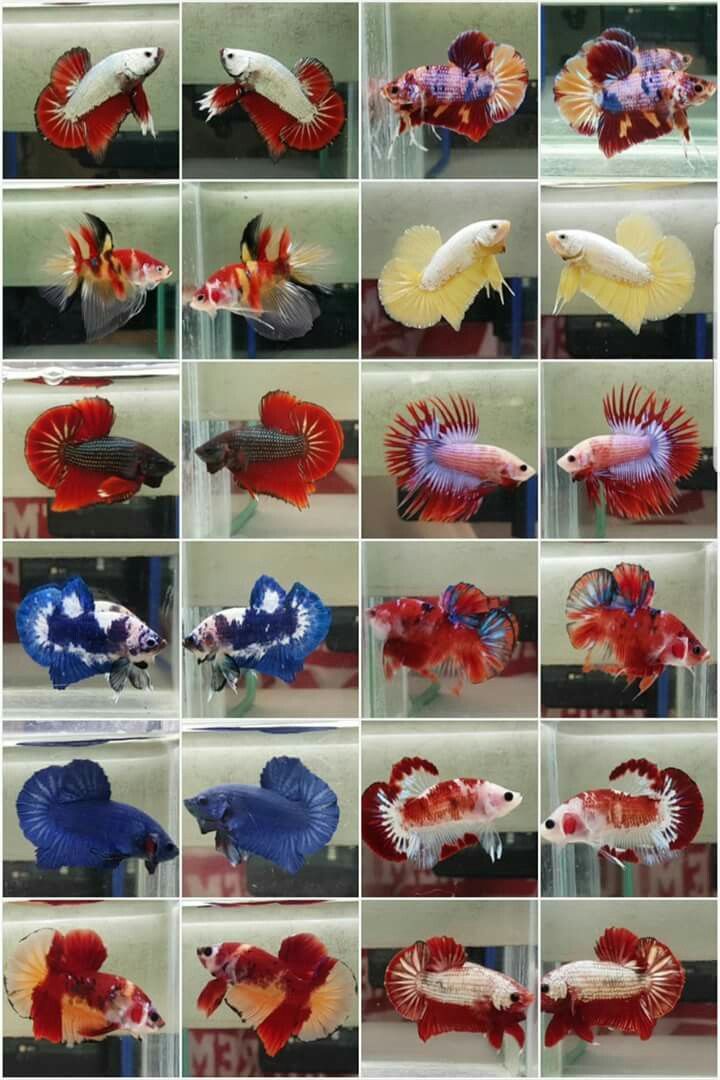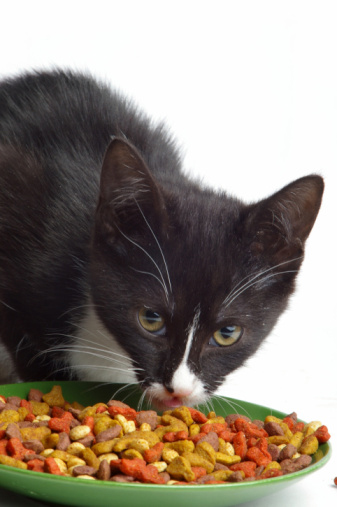Bottle feeding a baby llama
Feeding Guide for Crias - Camelid Veterinary Services
Although one always wishes for a trouble-free birthing season with easy birthings, good mothering and crias that are not only able to nurse, but their mother is able to provide all their nutritional needs, this doesn’t always happen. Occasionally a female dies and leaves an orphan cria or doesn’t have milk, or just doesn’t want to nurse her cria. Or perhaps she isn’t able to provide sufficient milk for her growing cria for some reason. So what do you do now?
The following is intended as a guide for bottle-feeding newborn crias. Please note that this is just a guide and if the cria is getting some milk from its dam, then it may not take the volumes suggested. Also as the cria grows older, it may start to get more out of other feedstuffs such as hay and concentrates and need less supplementation from a bottle.
Equipment Needed
- A feeding bottle: one used for lambs is appropriate.
Some lamb feeding teats, like those shown in Figures 1 and 2, fit perfectly onto soda bottles and these can be used as replacement bottles if needed! Human feeding bottles can also work well but use the nipples designed for older babies as these have more holes and allow for a greater flow rate.
- Spare teats in case replacement is needed (can be purchased alone). The rubber will tire and teats are a perfect place for bacterial and mould growth so should be replaced regularly.
- Weigh scales: weigh the cria in order to determine correct 24 hour feeding volume – see below. Weigh the cria daily to begin with to assess adequacy of your feeding strategy, especially if getting some milk from the mother and some from the bottle.
- Calculator to figure out the correct feeding volume based on cria body weight (see text) and a notebook to record both cria weights and volumes fed.
- Hot water, washing up liquid and a bottle brush for cleaning out the bottles after each use.
 Rinse with boiling water. Do not leave bottles sitting around between feeds.
Rinse with boiling water. Do not leave bottles sitting around between feeds. - Milk! In order of preference: mother’s own milk, goat’s milk, cow’s milk or replacer. Note that if the cria is less than 24 hours old, fresh or frozen (thawed) colostrum should ideally be used to feed the cria in order to avoid failure of antibody transfer (or failure of passive transfer, FPT) since crias need to acquire all their antibodies from their mother’s milk. Note that some diseases can be transmitted from infected colostrum – for example, TB, Johnes disease and BVD. Therefore it is important to ensure that you acquire any alternative milk from a disease free source if it is not from your own farm. An alternative would be a colostrum replacer but please note that most powdered products on the market are not replacers but “supplements” as they are quite low in antibodies. A powdered colostrum that has considerably higher IgG (antibody) content is Immucol Platinum. [If you cannot ensure disease-free colostrum, you may consider resorting to plasma transfusions using plasma collected from your own animals.
 ]
] - Measuring jug for mixing powdered supplements if using and measuring cups/measures as appropriate to mix product correctly. Any utensils used must be properly cleaned after each use to avoid contamination problems. Any supplements must be stored according to product directions.
- Figure 1. Lamb feeding bottle (Available here)
- Figure 2. Spare teat (Available here)
- Figure 3. Weigh sling and digital scale (Available here)
Volume and Frequency
As a guide, a cria under 2 months of age requires 10-15% of its body weight on a daily basis and this can be divided into several feedings – for very young crias, this needs to be every other hour if the cria has no other source of nutrition. As they get a little bit older you can increase the volume of feeds fed during the day and try to reduce the number of night-time feeds such that you feed last thing at night (eg 11.30 to midnight) and first thing in the morning (eg 6am) – but do try to do this gradually. Too much at one feed, or more than 15% total volume may cause diarrhoea or colic. It is also important that you don’t force-feed since this can result in milk being breathed into the lungs or going into the wrong stomach and the cria getting sick (they have three stomachs – you want the milk to pass directly to the third stomach). Monitor weight gain also on a daily basis to begin with to ensure that the cria is gaining weight appropriately. As the cria gets older you will be able to gradually increase the volume of the feedings and reduce the frequency so that it is not necessary to feed overnight. However, do not increase the volume too rapidly as colic may result.
Too much at one feed, or more than 15% total volume may cause diarrhoea or colic. It is also important that you don’t force-feed since this can result in milk being breathed into the lungs or going into the wrong stomach and the cria getting sick (they have three stomachs – you want the milk to pass directly to the third stomach). Monitor weight gain also on a daily basis to begin with to ensure that the cria is gaining weight appropriately. As the cria gets older you will be able to gradually increase the volume of the feedings and reduce the frequency so that it is not necessary to feed overnight. However, do not increase the volume too rapidly as colic may result.
| Weight lb | Weight kg | Min volume to feed 10% of Body Weight (ml / oz) | Max volume to feed 15% of Body Weight (ml / oz) | Suggested feed volume (ml / oz) |
| 15 | 7 | 700ml / 23oz | 1000ml / 33oz | 60-120ml / 2-4oz every 2-4 hrs |
| 20 | 9 | 900ml / 30oz | 1350ml / 45oz | 90-120ml / 3-4oz every 2-4 hrs |
| 25 | 11 | 1100ml / 37oz | 1700ml / 56oz | 90-150ml / 3-5oz every 2-4 hrs |
| 30 | 14 | 1400ml / 46oz | 2000ml / 66oz | 150-210ml / 5-7oz every 2-4 hrs |
| 35 | 16 | 1600ml / 53oz | 2400ml / 80oz | 260-400ml / 8-13oz every 4 hrs |
| 40 | 18 | 1800ml / 60oz | 2700ml / 90oz | 300-450ml / 10-15oz every 4 hrs |
How do you bottle feed?
If the cria’s mother is available, her milk is always the best source of nutrition for the cria, so if she has milk, always try to assist the cria to nurse before attempting to feed it anything else. Starting to bottle feed a cria can be a frustrating experience at the start. Generally I will try to immobilise the cria to some extent when first starting to bottle-feed an uncooperative recipient! Later on, once used to feeds, they will probably just walk up and take the bottle. I have attached a couple of photos that show suggestions for trying to feed a newborn. Figure 4 shows me standing over the cria, stabilising it between my knees and stabilising the head against my body. This allows me two hands free to deal with the cria’s head and the bottle. With my non-dominant hand I place my fingers under the jaw and pop the tip of my thumb into the side of the cria’s mouth to open it up. Then I place the tip of the teat into the cria’s mouth. This will usually cause the cria to suckle but not always. If it doesn’t, try to move the nipple back and forth. If this is unsuccessful, squeeze a little milk into the cria’s mouth to try and stimulate a response. Do not overdo this in case the cria aspirates the milk into its lungs.
Starting to bottle feed a cria can be a frustrating experience at the start. Generally I will try to immobilise the cria to some extent when first starting to bottle-feed an uncooperative recipient! Later on, once used to feeds, they will probably just walk up and take the bottle. I have attached a couple of photos that show suggestions for trying to feed a newborn. Figure 4 shows me standing over the cria, stabilising it between my knees and stabilising the head against my body. This allows me two hands free to deal with the cria’s head and the bottle. With my non-dominant hand I place my fingers under the jaw and pop the tip of my thumb into the side of the cria’s mouth to open it up. Then I place the tip of the teat into the cria’s mouth. This will usually cause the cria to suckle but not always. If it doesn’t, try to move the nipple back and forth. If this is unsuccessful, squeeze a little milk into the cria’s mouth to try and stimulate a response. Do not overdo this in case the cria aspirates the milk into its lungs. Some crias will just swallow what you squeeze into the mouth rather than sucking but the aim is to get the cria sucking properly or the bottle-feeding will take a while! Figure 5 shows an approach to bottle-feeding a cushed cria. Again, the positioning aims to stop some of the wriggling that can occur when trying to bottle-feed. With either approach, or any other, try to keep the head and neck straight and in line with the rest of the body to maintain balance and also make it easier for the cria to nurse.
Some crias will just swallow what you squeeze into the mouth rather than sucking but the aim is to get the cria sucking properly or the bottle-feeding will take a while! Figure 5 shows an approach to bottle-feeding a cushed cria. Again, the positioning aims to stop some of the wriggling that can occur when trying to bottle-feed. With either approach, or any other, try to keep the head and neck straight and in line with the rest of the body to maintain balance and also make it easier for the cria to nurse.
- Figure 4. Bottle-feeding a standing cria.
- Figure 5. Bottle-feeding a standing cria.
What milk should you use when bottle feeding?
If the mother has died or has no milk, we normally recommend using goat’s milk as a first choice of supplement and this can be fresh (undiluted) or canned which needs to be diluted 50:50 with water since it is condensed milk. Or you can use the powdered varieties, made up using the manufacturer’s guidelines. Goat’s milk is the closest to camelid milk nutritionally.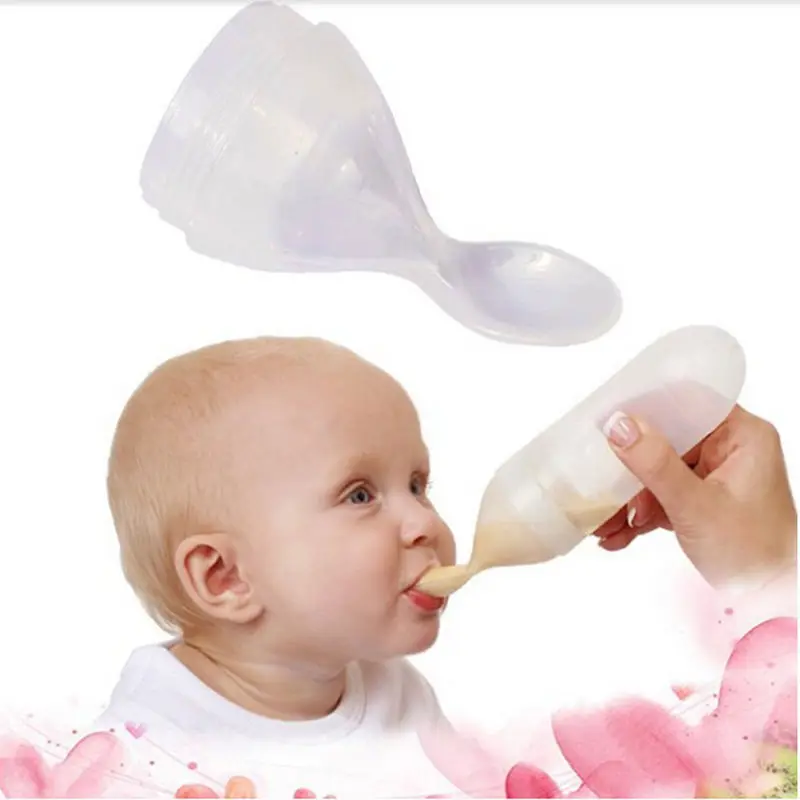 Cow’s milk is also pretty good as a replacement, and can again be fresh or reconstituted from powder.
Cow’s milk is also pretty good as a replacement, and can again be fresh or reconstituted from powder.
Remember that colostrum is vital to a newborn cria in order for it to have immunity to common pathogens in its environment. Crias are born without antibodies, unlike humans, and are dependent on those passed to the cria from its mother’s colostrum to protect it within the first few weeks of life. A cria that does not get adequate colostrum in the first 12-24 hours of its life will have failure of passive transfer and if it does not receive a plasma transfusion will probably succumb to infections early on in life. If lucky enough to avoid these, then failure to thrive may be a problem later on.
Therefore, if a cria is not willing to nurse after birth, the first consideration should be to milk the dam and feed this colostrum by bottle. The mother is the best source of colostrum. If insufficient colostrum is available, then another source should be used. Options include stored frozen camelid colostrum, or colostrum from another species, or powdered colostrum. The first choice alternative species would be goat colostrum, then cow. Have a supply of this ready in the freezer in case fresh is not available from your local dairy. Freeze it in small portions up to 120ml in size so that they can be readily defrosted on demand – note that because antibodies are proteins, colostrum must not be heated up too warm or the proteins will denature, just like boiling an egg! Defrost in warm water that is a little warmer than body temperature: do not microwave. If you have a local farmer that you can ask for colostrum, it would be advisable to ask whether they know if their herd is known to be free from TB, Johne’s or BVD. Since these diseases can potentially be transmitted to camelids in unpasteurised milk, it is best to avoid colostrum from animals that may carry these diseases.
Options include stored frozen camelid colostrum, or colostrum from another species, or powdered colostrum. The first choice alternative species would be goat colostrum, then cow. Have a supply of this ready in the freezer in case fresh is not available from your local dairy. Freeze it in small portions up to 120ml in size so that they can be readily defrosted on demand – note that because antibodies are proteins, colostrum must not be heated up too warm or the proteins will denature, just like boiling an egg! Defrost in warm water that is a little warmer than body temperature: do not microwave. If you have a local farmer that you can ask for colostrum, it would be advisable to ask whether they know if their herd is known to be free from TB, Johne’s or BVD. Since these diseases can potentially be transmitted to camelids in unpasteurised milk, it is best to avoid colostrum from animals that may carry these diseases.
Powdered colostrum “supplements” are an alternative that many people have because they are easy to buy and reach for in an emergency.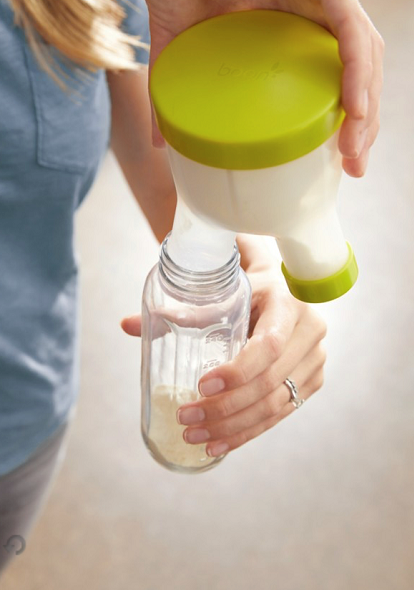 However, most are not “substitutes” or replacement for colostrum unless you use one with a guaranteed high IgG content such as Immucol Platinum – if you use the cheaper supplements, they will provide energy but will not provide the amount of antibodies needed to protect the cria from infections. They will buy you time but you will almost certainly have to consider plasma transfusions using plasma collected from your own animals. So if colostrum isn’t available from the mother, and you can’t get fresh colostrum from a source that you know is safe, use the powdered alternatives, but make sure it’s a good one.
However, most are not “substitutes” or replacement for colostrum unless you use one with a guaranteed high IgG content such as Immucol Platinum – if you use the cheaper supplements, they will provide energy but will not provide the amount of antibodies needed to protect the cria from infections. They will buy you time but you will almost certainly have to consider plasma transfusions using plasma collected from your own animals. So if colostrum isn’t available from the mother, and you can’t get fresh colostrum from a source that you know is safe, use the powdered alternatives, but make sure it’s a good one.
What if the cria won’t take a bottle?
Tube feeding can be done initially if the cria is too weak to stand and nurse and not willing to suckle from a bottle as this will give it a little energy to get up and get going. If you are not sure how to do this, get your vet to show you the first time: it’s crucially important that the tube is swallowed and passes into the oesophagus and that it doesn’t pass into the windpipe! Tube feeding should never be done in a cria that is unable to hold its head up as milk may flow back up to the mouth when the head is laid back down and then be breathed in resulting in aspiration pneumonia.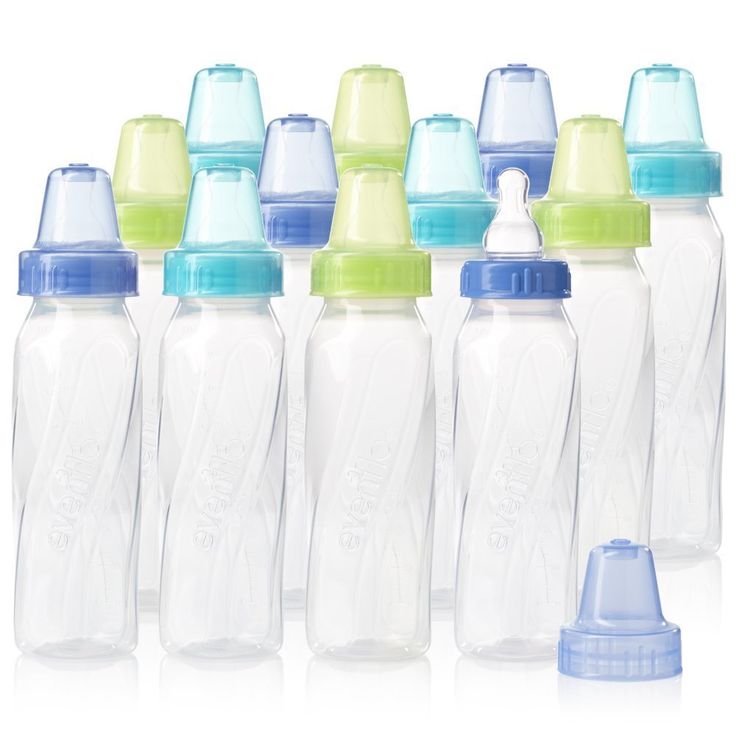 Also, never tube feed more than 90-120ml (3-4 oz) to a newborn cria in one feeding. Do not tube feed on more than 2 occasions as it can cause oesophagitis (inflammation of the oesophagus). There is also an increased risk of milk getting into the wrong stomach because the cria doesn’t swallow when tube-fed and because the larger volume given in one go can overwhelm the oesophageal groove which carries milk (and fluids) straight through to the third stomach compartment. This is a problem because the milk will ferment in the first stomach compartment and can cause a metabolic imbalance due to acidosis. You can try to simulate the volume of each swallow by giving just a little at a time through the tube in a pulsatile manner. If you have to tube-feed more than twice, there is probably a reason why the cria is not getting up and nursing for itself and you should seek veterinary attention.
Also, never tube feed more than 90-120ml (3-4 oz) to a newborn cria in one feeding. Do not tube feed on more than 2 occasions as it can cause oesophagitis (inflammation of the oesophagus). There is also an increased risk of milk getting into the wrong stomach because the cria doesn’t swallow when tube-fed and because the larger volume given in one go can overwhelm the oesophageal groove which carries milk (and fluids) straight through to the third stomach compartment. This is a problem because the milk will ferment in the first stomach compartment and can cause a metabolic imbalance due to acidosis. You can try to simulate the volume of each swallow by giving just a little at a time through the tube in a pulsatile manner. If you have to tube-feed more than twice, there is probably a reason why the cria is not getting up and nursing for itself and you should seek veterinary attention.
 (Available here)
(Available here) Other Tips
If you experience a problem with a newborn cria and are not sure whether the cria managed to take on board enough colostrum (and therefore sufficient passive immunity or antibodies acquired from the dam), these crias are good candidates for checking their IgG status. This is a measure of the transfer of passive immunity and you are looking for a minimum of 800 mg/dl, preferably 1000 mg/dl. Additionally, other crias that may be at increased risk and those that you should consider checking IgG are:
- any cria born to maiden (first time) mothers
- any cria born following a difficult birthing because they may be slower to get going
- a cria born to a dam who had a problem cria in previous years
- crias of low birth-weight (for alpacas, less than 7kg)
- premature crias or those that may have the indications of prematurity but be born at full term on the basis of dates (dysmature crias)
- crias born in inclement weather (less ideal conditions to get up and nurse – too cold, or roasting hot!).

Camelid Veterinary Services Ltd is able to offer a cria IgG screening service. You need to get your vet to collect a blood sample to send to us (2ml total volume is sufficient) in a plain serum tube but we can also use EDTA or heparin tubes. The cost of testing is £25 per sample (+VAT). We are also able to provide feeding bottles, replacement teats and feeding tubes with syringes as well as lots of amazingly useful stuff (!), here on our website.
View / print the downloadable PDF version
Feeding and Weaning a Bottle Fed Cria
Well I must say that our first experience with birthing and raising a cria has been an exciting one. I wasn’t expecting to be so involved though. I thought I’d share with you our hands on 2 month timeline for raising our little Albina.
There are many different opinions of what to feed cria. Here is the milk cocktail we chose to feed.
2 large spoonfuls of store brand probiotic vanilla yogurt. Cover yogurt with half/half (~ 3-4oz), fill rest of the bottle with Vitamin D whole milk. Leave some air in the bottle and shake very well to mix in all the yogurt. Warm the bottle in a pot of water and it’s ready to serve. Depending on quantity of milk we chose to feed in a 9oz glass human baby bottle or in a 24oz soda bottle with a flutter lamb nipple. Cut an ‘X’ in the nipples so that milk flows freely.
Leave some air in the bottle and shake very well to mix in all the yogurt. Warm the bottle in a pot of water and it’s ready to serve. Depending on quantity of milk we chose to feed in a 9oz glass human baby bottle or in a 24oz soda bottle with a flutter lamb nipple. Cut an ‘X’ in the nipples so that milk flows freely.
Day 1:
Weight: 20lbs
Albina was able to stand and walk within 40 minutes of birth. She had a great suck reflex and tried to suckle on the wall. We checked mom for milk but she was dry. We repeatedly applied a hot cloth to mom’s belly but no milk dropped. By hour #2 we decided to mix up some powdered colostrum. (NOTE: Learn from our mistake to NOT use powdered colostrums, it does nothing. Try for fresh cow/goat or frozen llama/goat.) Baby drank down 24oz of (what we thought was useful) colostrum in 12 hrs. 4oz every 2hrs or so.
Day 2:
We continued to apply hot towels to mom’s belly and finally started to get milk. YIPPY! Or so we thought. We pointed baby at mom’s udder but she freaked out, kicked and sat on her baby. Back to the bottle. We mixed in the last bit of useless colostrum, with some electrolytes into the above milk cocktail and Albina continued to drink well.
YIPPY! Or so we thought. We pointed baby at mom’s udder but she freaked out, kicked and sat on her baby. Back to the bottle. We mixed in the last bit of useless colostrum, with some electrolytes into the above milk cocktail and Albina continued to drink well.
We took Albina and mom to the vet for a checkup and an IGG and BVD test. Both came back with a clean bill of health and a 24hr wait for test results from the blood work.
Feeding schedule was 4oz every 2hrs around the clock total of 48oz of milk. Albina drinks bottle without human contact. We put the bottle in a feeder and she feeds herself. See Self Feeding Bottle Baby
How much should a cria drink? 10% of body weight to maintain. 15% of body weight to grow.
15% of 20lbs = 3 pounds = 48oz of milk.
Day 3:
Feeding still at 4oz every 2hrs around the clock
Weight: dropped to 19.8 lbs
IGG test came back at a ZERO! Yikes. Lessoned learned about powdered colostrum. Next time we will be getting fresh cow’s colostrum from the dairy at the end of our road. Back to the vet we went for a plasma transfusion.
Next time we will be getting fresh cow’s colostrum from the dairy at the end of our road. Back to the vet we went for a plasma transfusion.
Day 4:
Feeding 4oz every 2hrs around the clock. Getting very tired.
Day 5:
Feeding 4oz every 2hrs around the clock. Back to the vet for another IGG test
Weight: 22lbs
Day 6:
Tried feeding in the middle of the night. Cut out the 2am and 4am feeding… now feeding 6am, 9am, noon, 2pm, 4pm, 6pm, 10pm. Albina is drinking 7-9oz per feeding now. IGG Came back at 800! Yippy!
Week 2:
Still feeding at the Day 6 schedule and she is consistently drinking 8-9oz a feeding all week
Week 3:
New feeding schedule: 6am, 10am, 2pm, 6pm, 10pm She is a piggy and is now consuming 64-70oz a day. We stopped feeding out of 9oz baby bottles and now are using a lamb nipple on a 24oz Mt Dew bottle.
Week 4:
New feeding Schedule: 7am, noon, 5pm, 9pm Still is consuming 64-70oz a day.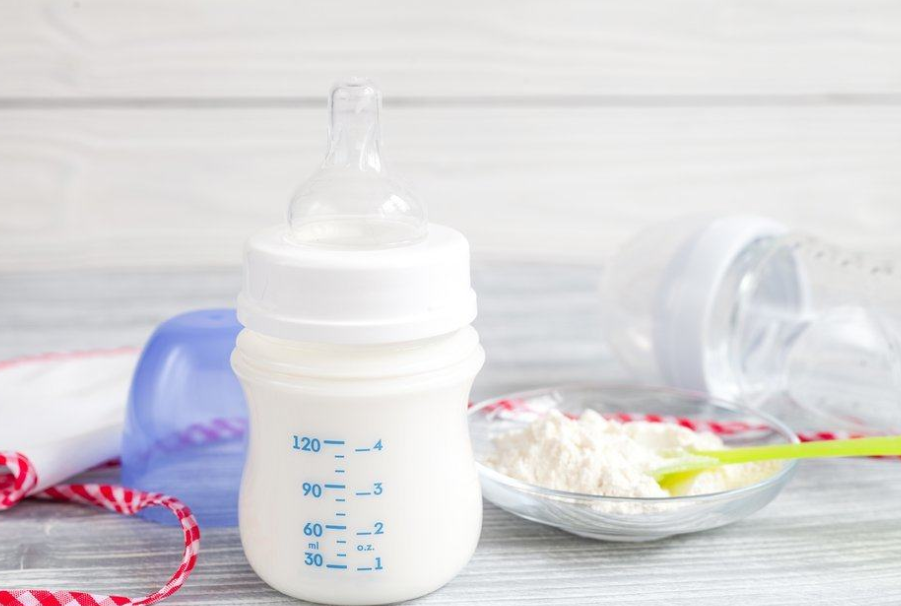
Week 5 & 6:
New feeding schedule: 7am, 3pm, 9pm She is now drinking over 70oz a day
Week 7 & 8
New feeding schedule: 8am & 9pm She’s losing interest in milk all together beginning of week 8 and often refuses the bottle or only drinks 2-4oz. By now she’s happily eating grass, grain, hay and uses the bottle more for a water supplement than for nourishment.
Weaning: At the end of week 8 she was drinking only 6oz a day maybe. I made the decision to cut her off fully. She weighs 52lbs now and is very independent, strong and healthy. My only concern was her water intake but recent barn cam footage shows she is drinking. I did consult a vet about weaning at 2 months of age since usually cria will nurse off mom until 6 months or more. They assured me that 2 months is perfectly fine for weaning as long as the cria has a creep feeder with as much hay and grain they want that adults can’t get to.
Albina drinking water @ 2 months oldA tiny llama is fed milk from a bottle in the Novosibirsk Zoo
see also
Top 10 animals of the Novosibirsk Zoo, which you rarely see anywhere else
Novosibirsk Zoo named after R. A. Shilo artificially feeds a newborn llama. The baby is like a cozy soft toy and from the first days of her life she has become very attached to the people who care for her.
A. Shilo artificially feeds a newborn llama. The baby is like a cozy soft toy and from the first days of her life she has become very attached to the people who care for her.
According to the zoo, the llama cub is almost a month old. This was the first birth for the female, and for some reason she did not feed her daughter. The employees of the ungulate sector took care of her.
“The baby is fed cow's milk from a baby bottle with a nipple. She is gaining weight well and is developing with age, ”the institution notes.
Photo: vk.com/novosibirsk_zoo
The little llama looks like her mother: red-haired with a dark, almost black, head. Due to the long legs and thick coat, the baby may seem rather large, but, according to zoologists, it is light at the same time.
“Llamas are domesticated animals. And since our baby is artificially fed, she is strongly attached to the people who care for her. Soon we plan to return her to the group of llamas so that she grows up among relatives, ”added the zoo.
Soon we plan to return her to the group of llamas so that she grows up among relatives, ”added the zoo.
Also in June, there was a replenishment in the family of bush dogs: they had two cubs. Veterinarians have already determined the sex of the babies - they turned out to be girls.
Subscribe to our Facebook page — stay up to date with the latest Novosibirsk news.
#Animals #Zoo #Cute city #Green City
In case you missed: labor prowess, LDS arborists and grunting yaks
20:05, 06 November 2022
The National Guard helped a pregnant woman get through traffic jams to the maternity hospital on Vertkovskaya
16:15, 06 November 2022
Every second Novosibirsk citizen declared their desire to stay in Russia
13:30, 06 November 2022
A cartoon about the gold of the Karakan forest was created in Novosibirsk
14:00, 05 November 2022
Residents of Novosibirsk will see a total lunar eclipse November 8
15:30, November 04, 2022
The 9-year-old construction of an Internet cafe in Birch Grove has been completed
10:30, 04 November 2022
Six squares and one park in Novosibirsk received official names
16:50, 03 November 2022
Show more
Subscribe to our social networks0001
Contents
- 1 Description and origin of the species
- 2 What is the difference between a llama and an alpaca?
- 3 What does a lama look like?
- 4 Where does the lama live?
- 5 What does a llama eat?
- 6 Character and lifestyle
- 7 Reproduction and cubs
- 8 How to tame a llama?
- 9 How long does a lama live?
- 10 Natural enemies
- 11 Household llamas
- 12 Population and species protection
- 13 Interesting facts about llamas
Llama is a domesticated mammal from the camelid family that lives in South America. It has been used as a beast of burden in the remote regions of the Andes since pre-Columbian times. The largest land mammal in South America that has survived to this day.
It has been used as a beast of burden in the remote regions of the Andes since pre-Columbian times. The largest land mammal in South America that has survived to this day.
Description and origin of the species
The ancestors of llamas lived on the plains of North America about 40 million years ago. About 3 million years ago, animals migrated to South America as part of the Great Inter-American Interchange when the Isthmus of Panama first appeared. Even 25,000 years ago, the population in North America was numerous - llamas lived in the states of California, Texas, New Mexico, Utah, Missouri and Florida. After the Ice Age, llamas disappeared from North America.
What is the difference between a llama and an alpaca?
The llama is larger than the alpaca, with a more elongated head and rounded ears. Lama grows up to 1.8 meters, alpaca does not exceed 1 meter in height. Alpaca fur is thinner, softer, longer and more valuable, while the color of alpaca fur is more intense than that of the llama. Similarly, the vicuña (wild alpaca) differs from the guanaco (wild llama) in its more modest size, shorter head, and more graceful physique.
Similarly, the vicuña (wild alpaca) differs from the guanaco (wild llama) in its more modest size, shorter head, and more graceful physique.
Guanaco and vicuña have a uniform light brown color with white patches. Their domesticated relatives, llamas and alpacas, boast a wider range of colors - there are white, black, brown, gray and piebald individuals.
What does a lama look like?
An adult animal reaches a height of 1.7-1.8 meters at the top of its head and weighs between 130 and 200 kg. The height of the animal at the withers is about 120 cm. The neck is long and relatively thin, a small, high-set head. The ears are long, pointed and slightly tilted forward. There is no sexual dimorphism in animals, so it is quite difficult to distinguish a female from a male in appearance.
The llama is similar in physique to other representatives of the camelid family, but the animal does not have a hump on its back, unlike a camel. Otherwise, llamas are in many ways similar to camels. Animals similarly chew their cud, and spit it out when they are unhappy. Both llamas and camels have fang-like incisors at the top of their jaws and callused pads on the soles of their cloven hooves as an adaptation to rocky ground. The long and unusually complex intestines allow llamas, like camels, to live on little water.
Animals similarly chew their cud, and spit it out when they are unhappy. Both llamas and camels have fang-like incisors at the top of their jaws and callused pads on the soles of their cloven hooves as an adaptation to rocky ground. The long and unusually complex intestines allow llamas, like camels, to live on little water.
Where does the lama live?
Lama lives in the western part of South America, in the mountains and at the foot of the Andes, in Chile, Ecuador, Peru, Bolivia, Argentina. These animals were domesticated mainly for the transport of goods in remote mountainous areas. In the wild, vicuyas and guanacos live in the highlands, at an altitude of 3,200 to 4,800 meters above sea level.
Llamas and alpacas were also introduced to North America and successfully established in the USA.
What does a llama eat?
Llama eats plant foods: fresh grass and cereals - munroa, campfire, field grass. When there is no fresh grass, animals eat branches and leaves of undersized shrubs - parastephia and baccharis. During periods of food shortage, llamas eat moss, lichen, and plant roots.
During periods of food shortage, llamas eat moss, lichen, and plant roots.
Character and lifestyle
Lamas are herd animals and live in herds. The social status of an animal in a herd is constantly changing, especially for males. Conflicts often occur between males, thanks to which the winners successfully move up the social ladder. Fights between males are spectacular - animals actively spit, butt and ram each other, strike with their feet to knock the enemy down.
Fights between females look much less dramatic - females usually limit themselves to spitting at other members of the herd. By spitting, you can determine how much the llama is annoyed. The more angry an animal is, the less processed chewing gum it uses to spit. Despite small skirmishes among themselves, llamas in the same herd take care of each other. Animals instantly respond to an alarm signal given by one of their relatives and prepare to defend the herd.
In the wild, vicuñas and guanacos live in family groups. The group usually includes one male, 5 to 15 females, and their offspring. The dominant male expels all males over 1 year old from the herd in order to eliminate competitors. Exiled males create their own herd, or live alone.
The group usually includes one male, 5 to 15 females, and their offspring. The dominant male expels all males over 1 year old from the herd in order to eliminate competitors. Exiled males create their own herd, or live alone.
Each group has its own territory of about 18 square kilometers. The size of the territory varies depending on the availability of food. Wild llamas are very shy. Thanks to their keen hearing, animals are constantly on the alert and it is difficult to take them by surprise.
When talking to each other, the lamas grunt. As an alarm signal, llamas make a sound similar to barking laughter. When an animal is angry or afraid, it groans, sighs, or makes a loud “mwa” sound. When the lama is anxious or unhappy, she presses her ears back. A happy or curious lama, on the other hand, pricks its ears forward.
Sexually aroused male llamas make a specific “orgl” sound, reminiscent of gargling, but more buzzing. Males make this sound from the moment of arousal and during intercourse, which lasts from 15 minutes to 1 hour.
Reproduction and young
Females reach sexual maturity at 12 months, males only at 3 years. Unlike many other animals, female llamas do not have heat. Ovulation in the female is stimulated from the outside, and occurs right during mating. Pregnancy usually occurs on the first try. Mating takes place in the prone position, and lasts approximately 20-45 minutes, which is very unusual for such large animals.
Pregnancy lasts approximately 350 days, ie approximately 11.5 months. Females don't lick their babies because the llama's tongue is too short. The animal can stick out its tongue a maximum of 13 mm, so instead of licking, females sniff and sing to their cubs.
Lamas try to give birth surrounded by herds to protect the newborn from predators. Childbirth takes only about 30 minutes and is usually easy, with females giving birth standing up. In one litter, as a rule, only one cub weighing from 9up to 14 kg. Just an hour after birth, the little llama is already on his feet, walking and sucking his mother's milk.
Llama milk has a low fat content, and a higher content of phosphorus and calcium, compared to cow and goat milk. At one time, the llama gives only about 60 ml of milk, so the cub has to feed often. Because of this, the female llama is never milked.
How to tame a llama?
Llama should be socialized and accustomed to a person only after the end of breastfeeding. In this case, the animal treats the person with curiosity and friendliness. In contrast, llamas that have been bottle-fed and tamed to humans too early will be very poorly managed as adults. With too early socialization with people, adult llamas treat people in the same way as their relatives. Early tamed males often spit, butt and kick people, while females are limited to spitting and defiant behavior in general.
This condition is called "llama berserk syndrome". The main factors of its occurrence are bottle feeding, too early taming and isolation of the animal from other llamas. As a result, adult llamas do not distinguish a person from their relatives, and try to dominate people. In the most severe cases, males actively bite, kick and attack their owners from behind, trying to knock the person to the ground.
In the most severe cases, males actively bite, kick and attack their owners from behind, trying to knock the person to the ground.
Castration of males before puberty reduces the chances of berserk syndrome, but castrated males sometimes also exhibit aggressive behavior towards humans. Aggressive male llamas with berserk syndrome can no longer be retrained, so they are usually euthanized.
However, ordinary llamas without the berserk syndrome also often spit at people.
How long does a lama live?
Lamas live an average of 15 to 25 years. Some individuals live more than 30 years.
Natural enemies
In the western United States, feral dogs and coyotes prey on llamas. In South America, llamas, especially wild guanacos and vicuñas, are hunted by cougars and Andean foxes.
Household llamas
Household llamas are used by people in the following ways:
- as pack animals . Llamas are still used as pack animals in remote areas of the Andes Mountains. Animals can carry about 25-30% of their own weight, that is, approximately 27-45 kg, for an average distance of 8-13 km, occasionally walking up to 24 km per day. If the load is too heavy, the llama will not move, it lies on the ground and spits at the driver.
- for wool . Llama fur is less valuable than alpacas, however, the fine wool from the llama's undercoat is used to make clothing. The coarser and stiffer outer hair goes to the production of carpets, tapestries and ropes.
- for meat . Like other livestock, the llama is also eaten. Only males are occasionally slaughtered for meat, females are used only for breeding. In the US, animal meat is not in demand.
- as herding animals .
 In the US, llamas are often used to guard livestock such as goats, sheep, and alpacas. Only one shepherd llama is assigned to the herd - a castrated male. If there are several llamas, they get close to each other and stop caring about the herd.
In the US, llamas are often used to guard livestock such as goats, sheep, and alpacas. Only one shepherd llama is assigned to the herd - a castrated male. If there are several llamas, they get close to each other and stop caring about the herd. - in animal therapy . Communication with animals reduces pain, reduces stress, helps fight illness and depression. In the US, llamas are used as therapy animals in hospitals and nursing homes.
Population and species protection
Lama is a domestic animal that is still actively bred in South America, so the animal population is quite stable. As of 2007, there were over 7 million llamas and alpacas in South America. About 40,000 more llamas, and about the same number of alpacas, live in the United States.
Wild llamas, vicuñas and guanacos are listed in the international Red Book with the status of a species of no concern. From the time of the Spanish conquest until 1964, the hunting of animals in South America was allowed everywhere and was not regulated in any way. Because of this, by the 1960s, the vicuña population was on the verge of extinction and was reduced to 6,000 individuals.
Because of this, by the 1960s, the vicuña population was on the verge of extinction and was reduced to 6,000 individuals.
The introduction of a ban on hunting, the wool trade and the opening of nature reserves helped to restore the population of wild llamas. The number of vicuna exceeds 350,000 individuals at present. The ban on the trade in vicuña wool has been lifted since 1993. Wild llama hunting is now only allowed in Tierra del Fuego in Chile.
Interesting facts about llamas
- Llama and camel have an artificially bred hybrid - kama. Kamas do not give offspring.
- Male llamas bite off the testicles of other males to get rid of competitors during the mating season.
- Guard llamas are used to protect the flock of sheep from predators.




